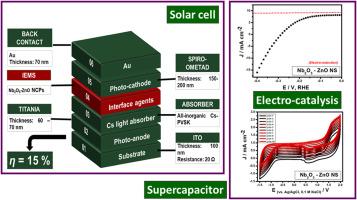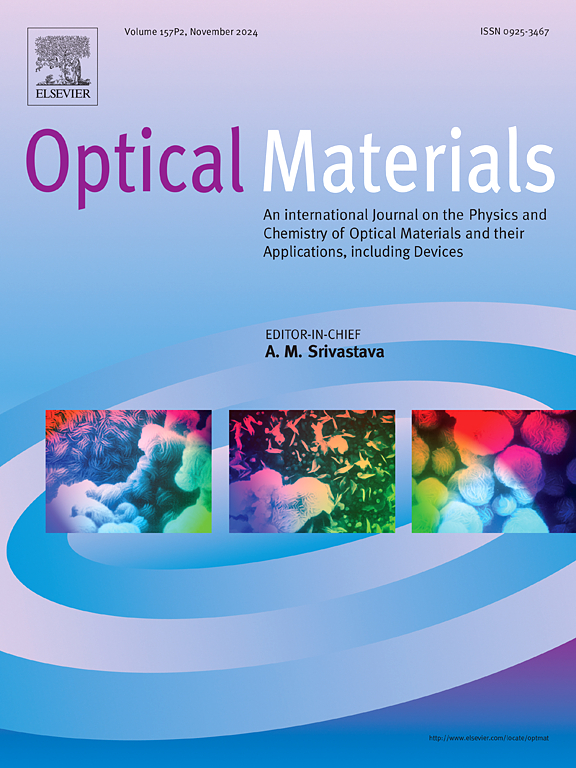微波促进可持续合成 Nb2O5 - ZnO 纳米材料,提高高性能能源系统的效率
IF 3.8
3区 材料科学
Q2 MATERIALS SCIENCE, MULTIDISCIPLINARY
引用次数: 0
摘要
本研究首次报道了微波法结合改进的氧化锌(ZnO)和氧化铌(Nb2O5)可持续合成法生成 Nb2O5 - ZnO 纳米球。纳米球形成后,带隙能下降到 3.25 eV,平均结晶尺寸为 62.49 nm。纳米球具有六方晶系和正交晶系的混合晶相。这种材料在电催化测试中表现出了制氢倾向,过电位(ηHER)最小,塔菲尔斜率值分别为 127 mV 和 125.6 mV dec-1。此外,纳米球装饰的电极在电解质环境中可保持 1500 分钟不变,并显示出 204.93 F g-1 的高电荷存储能力。由于界面钝化功能,空气处理过氧化物太阳能电池实现了 15% 的光伏效率。二元 Nb2O5 - ZnO 纳米球的出色性能验证了它们的实际应用前景。本文章由计算机程序翻译,如有差异,请以英文原文为准。

Microwave fostered sustainable synthesis of Nb2O5 – ZnO nanomaterial for efficiency amplification in high performing energy systems
This study presents the first report on the microwave approach combined with improved sustainable synthesis of zinc oxide (ZnO) and niobium oxide (Nb2O5) to generate Nb2O5 – ZnO nanospheres. Following the development of nanospheres, the band gap energy decreased to 3.25 eV, and the average crystallite size was found to be 62.49 nm. The nanospheres had a mixed crystalline phase of hexagonal and orthogonal crystals. This material has demonstrated a predisposition towards hydrogen production in the electro-catalytic tests, with a minimal overpotential (ηHER) and a Tafel slope values of 127 mV and 125.6 mV dec−1. Furthermore, nanospheres decorated electrode remained intact in electrolyte environment for 1500 min and exhibited profound charge storage of 204.93 F g−1 15 % PV efficiency was attained by the air-processed perovskite solar cell thanks to the interface passivation functionality. The commendable performance of the binary Nb2O5 – ZnO nanospheres have validated their prospects for practical applications.
求助全文
通过发布文献求助,成功后即可免费获取论文全文。
去求助
来源期刊

Optical Materials
工程技术-材料科学:综合
CiteScore
6.60
自引率
12.80%
发文量
1265
审稿时长
38 days
期刊介绍:
Optical Materials has an open access mirror journal Optical Materials: X, sharing the same aims and scope, editorial team, submission system and rigorous peer review.
The purpose of Optical Materials is to provide a means of communication and technology transfer between researchers who are interested in materials for potential device applications. The journal publishes original papers and review articles on the design, synthesis, characterisation and applications of optical materials.
OPTICAL MATERIALS focuses on:
• Optical Properties of Material Systems;
• The Materials Aspects of Optical Phenomena;
• The Materials Aspects of Devices and Applications.
Authors can submit separate research elements describing their data to Data in Brief and methods to Methods X.
 求助内容:
求助内容: 应助结果提醒方式:
应助结果提醒方式:


